Bakeris Roofing Articles
Since 1990 - Locally Owned
100% Satisfaction Guarantee
Ask About Our Military Discount
Hours:
Request Estimate
Hero Request Form
Thank you for contacting us.
We will get back to you as soon as possible
Please try again later
Bakeris Roofing specializes in addressing roofing issues caused by wind and hail damage. Here’s how they can help:
- Inspection and Assessment: They start with a thorough inspection to assess the extent of the damage, identifying compromised shingles, leaks, and other issues caused by the storm.
- Insurance: Bakeris Roofing will let you know if you need to file an insurance claim.
- Expert Repairs: Our team of professionals will perform high-quality repairs, replacing damaged shingles, fixing leaks, and addressing any other issues to restore your roof’s integrity.
- Preventive Measures: We may offer solutions for your roof against future damage, such as upgrading to more durable materials or installing additional protective features.
- Quick Response: Understanding the urgency of storm damage, Bakeris Roofing is committed to providing prompt service to minimize further damage and ensure your home is secure.
Bakeris Roofing is a trusted local company with over 30 years of experience in serving our community. We are fully licensed and insured, ready to assist with all your roofing needs. Whether it's repairs from wind and hail damage or general maintenance, our team is here to ensure your roof is in top shape.
By choosing Bakeris Roofing, you get a dedicated partner in repairing and safeguarding your roof from the impacts of wind and hail. Contact us at 515-967-8199 or www.iowaroof.com
Choosing the Right Ventilation for Your Home: Bakeris Roofing Is Here to Help
Introduction: Proper ventilation is crucial for maintaining a healthy and comfortable living environment in your home. It not only helps to regulate temperature but also removes excess moisture and pollutants, ensuring better air quality and extending the lifespan of your roof. With various options available, choosing the right ventilation system can be overwhelming. Fortunately, Bakeris Roofing is here to guide you through the process and help you make the best decision for your home.
Understanding Ventilation: Before diving into the selection process, it's essential to understand the basics of ventilation. Ventilation involves the exchange of indoor and outdoor air to regulate temperature and remove pollutants. In the context of roofing, ventilation primarily focuses on airflow through the attic space.
Types of Ventilation:
- Ridge Vents:
Installed along the peak of the roof, ridge vents allow hot air to escape from the attic while drawing in cooler air through soffit vents. This continuous airflow helps to prevent moisture buildup and maintains a consistent temperature in the attic.
- Soffit Vents:
Located under the eaves of the roof, soffit vents allow fresh air to enter the attic space. They work in conjunction with ridge vents to create a balanced airflow system, promoting efficient ventilation and preventing issues like ice dams and mold growth.
- Gable Vents:
Positioned on the gable ends of the roof, gable vents facilitate air movement by allowing hot air to escape. While they can be effective in certain situations, they may not provide as efficient airflow as ridge and soffit vents when used alone.
- Roof Louvers: These are static vents installed on the roof surface to allow hot air to escape. While they can be effective, they are not as aesthetically pleasing as ridge vents and may not offer as efficient airflow.
Choosing the Right Ventilation:
When selecting a ventilation system for your home, several factors should be considered:
- Climate:
The climate of your region plays a significant role in determining the type and amount of ventilation needed. In warmer climates, adequate ventilation helps to prevent heat buildup and reduce cooling costs, while in colder climates, it helps to prevent ice dams and moisture buildup.
- Roof Design:
The design and slope of your roof can influence the effectiveness of different ventilation options. For example, a steeply pitched roof may require different ventilation solutions compared to a low-slope roof.
- Attic Space: The size and layout of your attic space will also impact the choice of ventilation. Proper ventilation should ensure that air circulates evenly throughout the attic, reaching all areas to prevent moisture buildup and heat accumulation.
- Building Codes: It's essential to check local building codes and regulations to ensure compliance when installing ventilation systems. Building codes often specify minimum ventilation requirements based on factors such as attic size and roof pitch.
How Bakeris Roofing Can Help:
At Bakeris Roofing, we understand the importance of proper ventilation for your home. Our team of experienced professionals can assess your roofing needs and recommend the best ventilation solution tailored to your specific requirements. Whether you need to upgrade your existing ventilation system or install a new one, we have the expertise and resources to get the job done efficiently and effectively.
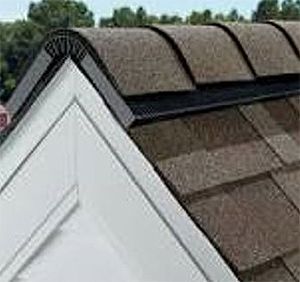
Conclusion:
Choosing the right ventilation system for your home is crucial for maintaining indoor comfort, preserving the integrity of your roof, and ensuring good air quality. With the guidance of experts like Bakeris Roofing, you can select the most suitable ventilation solution to enhance the performance and longevity of your roof while creating a healthier living environment for you and your family.
Pests and Your Roof: What Homeowners Should Know
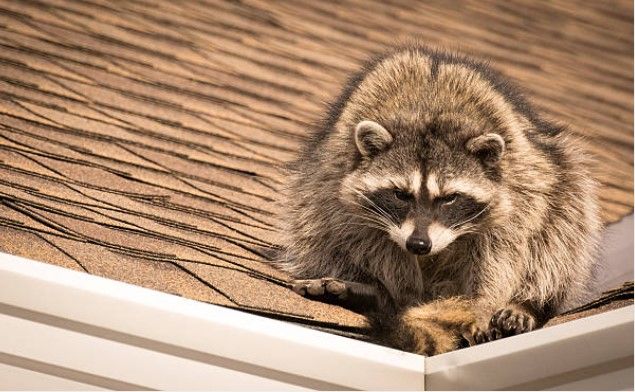
Your roof is a vital part of your home’s defense against the elements—but it can also attract unwanted guests like pests. These creatures not only cause structural damage but can also create health hazards if left unchecked. Here's how pests can impact your roof and what you can do to prevent them.
Common Pests That Target Roofs
• Birds
- How They Cause Damage: Birds may nest in gutters, vents, or under loose shingles, causing blockages or damaging roofing materials.
- Risks: Nesting debris can lead to water backups, while bird droppings can damage shingles over time.
• Rodents (Squirrels, Rats, and Mice)
- How They Cause Damage: Rodents chew through shingles, fascia, or soffits to gain entry into your attic.
- Risks: Their gnawing can damage wiring, insulation, and wood framing.
• Insects (Bees, Wasps, Termites, and Ants)
- How They Cause Damage: Bees and wasps build hives in eaves or attic spaces, while termites and carpenter ants weaken wood structures.
- Risks: Structural damage, increased repair costs, and potential stings from aggressive insect species.
• Raccoons
- How They Cause Damage: Raccoons are strong and can tear through shingles or vents to enter attics.
- Risks: They can cause extensive structural damage and leave behind droppings that pose health risks.
• Bats
- How They Cause Damage: Bats squeeze into small gaps in vents or soffits, establishing colonies in attics.
- Risks: Their droppings, or guano, can harbor harmful fungi and create unpleasant odors.
Signs of Pest Problems on Your Roof
- Visible Damage: Missing shingles, gnaw marks, or holes in the fascia or soffit.
- Debris in Gutters: Leaves, twigs, or nesting materials can indicate bird or rodent activity.
- Unusual Sounds: Scratching, squeaking, or buzzing noises coming from the attic or roof.
- Droppings: Pest waste in or around the roofline.
- Chewed Wiring: Evidence of rodents accessing the attic.
How to Protect Your Roof from Pests
• Seal Entry Points
- Inspect for gaps or holes in the roof, soffits, or fascia and seal them with caulk or metal mesh.
• Maintain Gutters
- Clean gutters regularly to remove nesting materials and prevent clogs that attract pests.
• Trim Overhanging Branches
- Keep tree limbs trimmed away from your roof to limit access points for squirrels, raccoons, and insects.
• Install Pest Barriers
- Use vent covers, chimney caps, and screens to block pests from entering key access points.
• Inspect Regularly
- Conduct routine roof inspections to catch signs of pests early and address potential issues promptly.
• Eliminate Attractants
- Avoid leaving food or trash outside that might lure pests toward your home.
• Consult Professionals
- If pests are already causing damage, contact a pest control specialist and a roofing expert to address both the infestation and any structural issues.
Why It Matters
Ignoring pest issues can lead to:
- Structural Damage: Weakening of roof materials, insulation, and framing.
- Health Hazards: Contaminated air from droppings or potential bites/stings.
- Costly Repairs: Pest damage can escalate quickly, increasing repair expenses.
Protecting your roof from pests is key to maintaining your home's integrity and safety. If you suspect pest-related roof damage, Bakeris Roofing can help inspect and repair your roof to ensure its secure and pest-free! Call us at
(515) 207-7949.
How Long Does It Take to Replace a Roof?

For a standard roof, replacement typically takes about a day. However, the exact timeline can vary based on several factors unique to your home and roof. Here’s a closer look at what can influence the duration of a roof replacement:
1. Roof Steepness (Pitch):
- What to Consider: The steeper the roof, the more challenging and time-consuming the project. Steep roofs require additional safety measures and extra prep work to protect your home during the tear-off and installation process.
2. Roof Complexity:
- Simple Gable Roofs: These are straightforward and quicker to replace.
- Complex Designs: Roofs with multiple faces, hips, valleys, or roof-to-wall transitions require more time due to the added detail and precision needed for proper installation.
3. Accessibility:
- Rooftop Delivery: If the roof is easily accessible, shingles and materials can be delivered directly to the rooftop, speeding up the process.
- Hand-Carrying Materials: If access is limited, materials may need to be manually carried up, which can add significant time to the project.
4. Home Features and Protections:
- Landscaping: Homes with extensive landscaping, patios, or decks require extra care to set up protective measures. These precautions ensure that your property remains undamaged during the project.
5. Size of the Crew:
- A larger, experienced roofing crew can complete the job faster, while smaller teams might take longer, especially on larger or more intricate roofs.
6. Weather Conditions:
- Rain, high winds, or extreme temperatures can delay the project for safety and quality reasons.
What You Can Expect
For most residential roofs, a full replacement is completed within 1-2 days. However, complex projects or those requiring significant prep work may take longer. Rest assured, Bakeris Roofing takes all necessary steps to ensure your roof is replaced efficiently and with the highest quality, regardless of the time required.
If you’re ready for a new roof or have questions about the process,
reach out to us at Bakeris Roofing—we’re here to guide you every step of the way!
What Is Fascia on Your House?
The fascia is an important but often overlooked component of your home’s exterior. It’s the horizontal board that runs along the edge of your roofline, directly below the roof's edge, and behind the gutters. It provides both functional and aesthetic benefits to your home.
Functions of Fascia:
- Support for Gutters: The fascia acts as a mounting point for your gutters, helping them stay securely attached to your home.
- Protection: It shields the edges of your roof and attic from weather elements, such as rain, snow, and wind, preventing water from seeping into vulnerable areas.
- Aesthetic Appeal: The fascia board gives your home a finished, polished look by creating a clean edge where the roof meets the walls.
Common Materials Used for Fascia:
- Wood: Traditional and attractive but requires regular maintenance to prevent rot or warping.
- Vinyl: Durable and low-maintenance, often used in modern homes.
- Aluminum: Lightweight, weather-resistant, and sometimes used to cover wooden fascia for added protection.
- Composite: Made from a mix of materials, composite fascia is strong, durable, and resistant to rot or insect damage.
Signs of Fascia Problems:
- Peeling Paint: A sign of moisture damage or aging.
- Rot or Cracking: Indicates wood fascia has been exposed to water or pests.
- Sagging Gutters: Often a result of weakened fascia that can no longer support the weight of the gutters.
- Gaps or Holes: These can allow pests to enter your attic or moisture to seep in, leading to more extensive damage.
Maintaining Fascia:
- Regularly clean and inspect your gutters to prevent water overflow that can damage the fascia.
- Repaint or reseal wooden fascia boards periodically to protect them from the elements.
- Replace damaged or rotting fascia boards promptly to maintain your home’s structural integrity.
The fascia plays a crucial role in protecting your home and maintaining its curb appeal. If you notice any issues or need repairs, Bakeris Roofing is here to help keep your home in top condition!
The Shingle vs. the Body: Understanding Roof Aging
Just like our bodies, shingle roofs have their peak performance years, and as time goes on, they begin to show signs of aging. The most common issue with shingle roofs is granule loss, and it’s a natural part of the aging process.
Mother Nature’s Daily Battle
Throughout the year, Mother Nature plays her part in wearing down shingles:
- The Sun: Like constant exposure to UV rays can damage our skin, the sun bakes shingles, causing them to weaken and lose their protective granules.
- The Wind: Wind tugs at shingles, gradually loosening them and accelerating wear.
- The Cold: Just as cold weather can stiffen our joints, freezing temperatures make shingles brittle and prone to cracking.
Signs of Roof Aging
Think of shingle aging like the changes our bodies go through:
- Granule Loss: This is like losing hair as we age. Granules protect shingles from the elements, and their loss exposes the shingles to further damage.
- Cracking: Similar to how our skin wrinkles over time, shingles develop cracks, reducing their effectiveness.
- Brittleness: As shingles lose their flexibility, they become brittle, much like how our bodies lose some of their elasticity as we age.
The Importance of Regular Roof Checkups
Just as regular health checkups can catch issues early, periodic roof inspections can help identify aging shingles before they lead to costly problems like leaks or structural damage. If you notice signs of granule loss, cracking, or brittleness, it may be time to consult a professional roofer. Contact Bakeris Roofing at 515-967-8199 or on the web at
www.iowaroof.com
Reviews
Choosing the Right Ventilation Article
Call now !
(515) 207-7949
Related Services
Jordan did an amazing job putting up a new ventilation system in our roof as well as replacing a part of the roof that wasn’t done properly by the previous contractors. He was also kind enough to secure a siding in one part of the house which was coming off. Overall, we’re very pleased with his job and will contract Bakeris Roofing again should we need any roof projects done in the future!
- Jane G via Google
Learn More About Bakeris Roofing
Serving the central Iowa area. Bakeris Roofing specializes in roof replacements, roof repairs, asphalt shingles, and metal roofs. Free storm damage inspections. 5% Military discount. Manufacturer and industry-leading warranties. Call now.
Why Do You Need a Professional Roof Inspection?
A professional roof inspection is essential for several reasons:
- Safety: Climbing onto a roof can be dangerous, especially for someone who is not experienced or equipped with proper safety gear. Professional inspectors are trained to assess roofs safely, reducing the risk of accidents or injuries.
- Expertise: Professional inspectors have the knowledge and expertise to identify potential issues that an untrained eye might overlook. They can spot signs of damage, wear and tear, or structural problems that could compromise the integrity of the roof.
- Preventive Maintenance: Regular inspections can help catch small problems before they escalate into major issues. By identifying and addressing minor repairs early on, you can extend the lifespan of your roof and prevent costly damage in the future.
- Insurance Claims: If your roof sustains damage due to weather events or other unforeseen circumstances, having documentation from a professional inspection can be valuable when filing an insurance claim. Insurers often require evidence of the condition of the roof before they will approve a claim.
- Resale Value: A well-maintained roof adds to the overall value and curb appeal of a property. If you're planning to sell your home, having documentation of recent professional inspections and repairs can reassure potential buyers and help you negotiate a higher selling price.
- Code Compliance: Building codes and regulations are constantly evolving, and your roof may need to meet certain standards to remain compliant. A professional inspector can assess whether your roof meets current codes and recommend any necessary upgrades or modifications.
Overall, a professional roof inspection is an investment in the safety, longevity, and value of your property. It provides peace of mind knowing that your roof is in good condition and can help you avoid costly repairs or replacements down the line.
serving Area
Polk County, IA
Dallas County, IA
Warren County, IA
Madison County, IA
Marion County, IA
Jasper County, IA
Des Moines, IA
Urbandale, IA
Ankeny, IA
Altoona, IA
Waukee, IA
Grimes, IA
Newton, IA
Grinnell, IA
West Des Moines, IA
Business Hours
- Mon - Fri
- -
- Sat - Sun
- Closed



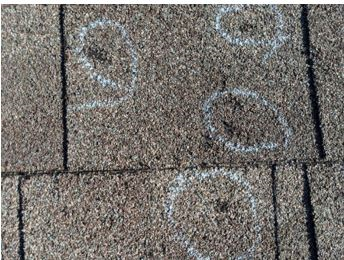
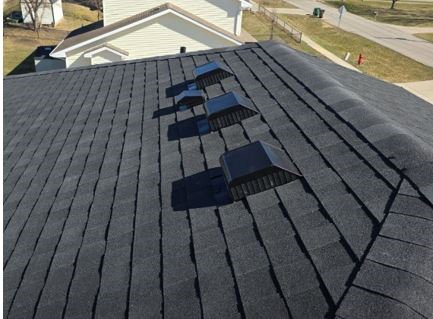
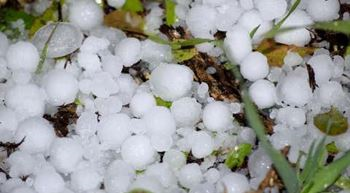
Share On: